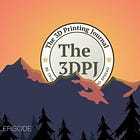A typical question I usually get:
“Hey Pawel, we’re planning to take our LinkedIn profile more seriously. You know, increase activity, write about the benefits of 3D printing and our solutions, etc. What would you advise? What’s the best way to do it?”
My equally typical answer:
“What you write is not as important as how often you do it. Of course, content matters – but consistency and regularity are the most important things!”
And although this seems obvious, every time I share this, it feels like a revelation to the other person. Their eyes widen, and the thought running through their head is: “Of course! That’s it!”
The catch is – it’s easier said than done...
In a world dominated by social media, audience attention is the most valuable currency. To build a lasting brand and authority – only consistent, regular, and valuable online presence can achieve that.
But it’s also important to understand that simply being present on LinkedIn, Facebook, or YouTube is not enough. In the context of 3D printing – a technology that is by nature complex and demanding – social media should not be treated as a direct sales channel, but rather as a tool for building expert positioning.
It’s a place to tell your story, not to send an invoice for a purchased product. That’s what your online store is for - not LinkedIn.
I wrote about this in a previous article:
Paradoxically, to succeed in social media while selling advanced technological products such as 3D printers, you need to stop trying to sell them directly.
Direct, aggressive calls-to-action like “buy now,” “check out our promotion,” or dry lists of technical parameters can kill even the most promising profile.
Why? Because the average Instagram, LinkedIn, or TikTok user is not scrolling through their feed with the intent of buying a 3D printer. They’re there for entertainment, relaxation, inspiration, or easily digestible knowledge.
Your job is to fit into that need.
Your 3D printer is not just a product. It’s a tool for creating value, solving problems, and bringing ideas to life. Those three pillars should form the foundation of your communication.
People don’t care about the printer’s specs – they care about what the printer can do for them. What problems can it solve? How can it make life easier? Can it help them make money?
Highlighting those benefits is the essence of effective communication in the 3D industry.
Case studies, while sounding professional, are often a trap.
Dry, jargon-heavy, long, and boring case studies won’t interest anyone. You’ll save them as a PDF – and no one will download them.
But that same story, told as a series of posts, a short video interview with a client, an animation showing the process from idea to print, or an attractive carousel with key takeaways – that’s a completely different story.
The point is to extract the essence, the emotion, and the real benefit from the case study, and package it into an attractive, social-media-friendly format.
And here we come to the essence of the entire matter – the titular consistency.
Building such valuable presence is not a sprint, it’s a marathon. A strategy for months, even years.
Publishing a single brilliant video and then waiting for the audience’s reaction is not enough. Social media algorithms reward regularity. Your audience gets used to your presence and starts expecting it.
Consistent posting signals to the platforms that your profile is alive, active, and delivering value – therefore worth promoting and showing to a larger audience. It also builds trust.
A profile that posts once a month and then disappears for half a year doesn’t inspire trust. It looks abandoned or unprofessional.
Meanwhile, a profile that delivers a dose of knowledge, inspiration, or just good 3D-printing-related fun every week – or better yet, several times a week – becomes a predictable, and therefore desirable, part of your audience’s social media diet.
When I started writing for polish Centrum Druku 3D, my target was 13 articles a week. Two a day on weekdays and three in total on weekends. If for some reason I couldn’t publish on a given weekday, I would make up for it on the following days.
If instead of 13, there were 15 or 16 – great. But it could never be less than 13. Even if it meant publishing 5 articles over the weekend.
I applied the same approach on LinkedIn. I started with historical articles, which I published daily – even on holidays, New Year’s Eve, and New Year’s Day.
Then I began publishing daily articles on The 3D Printing Journal – a series of 300 articles that I ended mainly because I started working with Bambu Lab:
Since then, I’ve been publishing three articles a week:
Monday: 3DP War Journal (which already has 62 week-by-week editions!)
Wednesday: Recode AM
Friday: AM Survivor
Yes, there are days/weeks when it’s not easy. Sometimes I need to prepare articles 1–2 weeks in advance, knowing that on the scheduled day I’ll be traveling without easy computer access.
It’s also important to understand and accept that not every post will go viral. Not every post will gather lots of likes and comments.
And that’s absolutely normal. This fluctuation in engagement is part of the game.
Sometimes you hit a nerve with your community, and sometimes even the best content passes almost unnoticed.
The key is not to get discouraged.
Every post, even one with low reach, is another brick in building your image. Every post sharpens your communication skills and teaches you what resonates with your audience and what doesn’t. It helps you better understand the algorithms.
The more you publish, the better you understand your target audience, and the more precise and valuable your content becomes.
It’s a self-reinforcing cycle: you publish, you learn, you improve, you attract a larger audience, which gives you more feedback, which in turn allows you to create even better content.
Content creation is just one piece of the bigger puzzle. For it to be authentic and credible, it must come from true passion and knowledge. The person running the social media profile must have a deep understanding of the technology, its limitations, and its potential. They need to work with the printers every day, talk to customers, and solve their problems.
Only then will the content be natural, full of authentic examples, and free from artificial marketing jargon.





